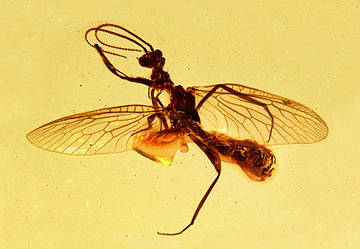Abstract
Psychodidae Newman, 1834 is a large family of small, hairy nematoceran dipterans, comprising more than 2,600 described extant species. It is currently subdivided into seven subfamilies: Bruchomyiinae Alexander, 1920, Horaiellinae Enderlein, 1936, Phlebotominae Rondani, 1840, Psychodinae Newman, 1834, Sycoracinae Jung, 1954, Trichomyiinae Tonnoir, 1922, and the fossil subfamily Protopsychodinae Stebner et al., 2015. Some authors consider the group to consist of two families, i.e., Psychodidae and Phlebotomidae (Williams, 1993; Azar et al., 1999). This fact is founded only on the hematophagous and medically important aspects of the phlebotomines, nevertheless this arrangement is unfounded, because the phylogenetic relationships between the psychodid subfamilies remain unresolved, even if there is a possible sister-group relationship between the Phlebotominae and Psychodinae (Curler & Moulton, 2012). We consider recognizing phlebotomines as a separate family would necessitate also giving separate familial status to all the currently recognized subfamilies, which is not adopted here.
References
Azar, D., Nel, A., Solignac, M., Paicheler, J.-C. & Bouchet, F. (1999) New genera and species of psychodoid flies from the Lower Cretaceous amber of Lebanon. Palaeontology, 42 (6), 1101–1136.
https://doi.org/10.1111/1475-4983.00112
Azar, D., Perrichot, V., Néraudeau, D. & Nel, A. (2003) New psychodids from the Cretaceous ambers of Lebanon and France, with a discussion of Eophlebotomus connectens Cockerell, 1920 (Diptera, Psychodidae). Annals of the Entomological Society of America, 96 (2), 117‒126.
https://doi.org/10.1603/0013-8746(2003)096[0117:NPFTCA]2.0.CO;2
Curler, G.R. & Moulton, J.K. (2012) Phylogeny of psychodid subfamilies (Diptera: Psychodidae) inferred from nuclear DNA sequences with a review of morphological evidence for relationships. Systematic Entomology, 37 (3), 603–616.
https://doi.org/10.1111/j.1365-3113.2012.00634.x
Granier, B., Toland, C., Gèze, R., Azar, D. & Maksoud, S. (2016) Some steps toward a new story for the Jurassic—Cretaceous transition in Mount Lebanon. Carnets de Géologie, 16 (8), 247–269.
https://doi.org/10.4267/2042/59924
Kvifte, G.M. & Wagner, R. (2017) Psychodidae (sand flies, moth flies or owl flies). In: Kirk-Spriggs, A.H. & Sinclair, B.J. (Eds). Manual of Afrotropical Diptera. Volume 2. Nematocerous Diptera and lower Brachycera. Suricata 5. South African National Biodiversity Institute, Pretoria, pp. 607–632.
Maksoud, S. & Azar, D. (2020) Lebanese amber: latest updates. Palaeoentomology, 3 (2), 125–155.
https://doi.org/10.11646/palaeoentomology.3.2.2
Maksoud, S., Azar, D, Granier, B. & Gèze, R. (2017) New data on the age of the Lower Cretaceous amber outcrops of Lebanon. Palaeoworld, 26 (2), 331–338.
https://doi.org/10.1016/j.palwor.2016.03.003
McAlpine, J.F. (1981) Morphology and terminology—adults. In: McAlpine, J.F., Peterson, B.V., Shewell, G.E., Teskey, H.J., Vockeroth, J.R. & Wood, D.M. (coordinators), Manual of Nearctic Diptera. Volume 1. Research Branch, Agriculture Canada, Monograph No. 27, Ottawa, pp. 9‒63.
Williams, P. (1993) Relationships of phlebotomine sand flies (Diptera). Memórias do Instituto Oswaldo Cruz, 88, 177–183.


